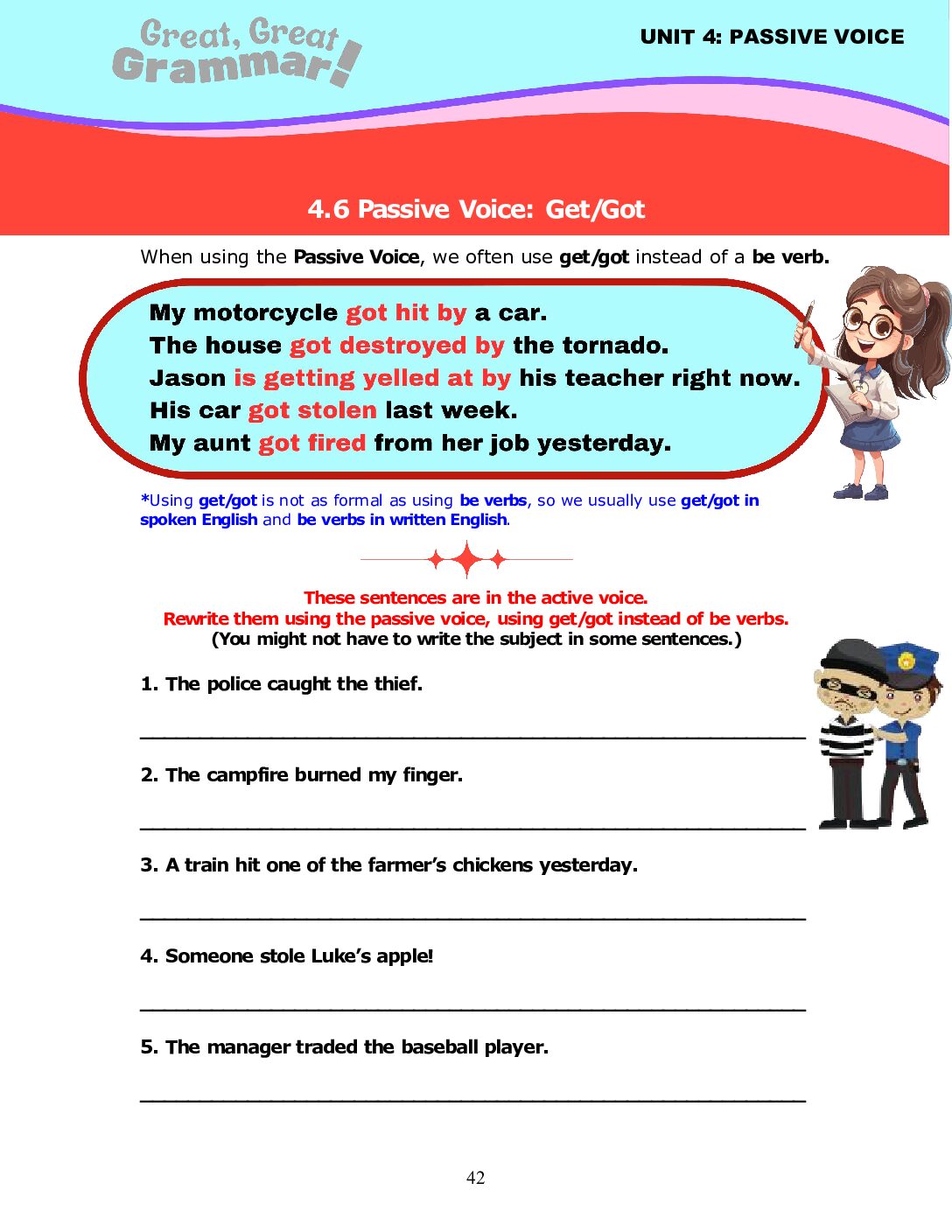In this ESL grammar lesson, students learn to use the passive voice with “get” and “got” instead of “be” verbs. This is a more informal construction that is commonly used in spoken English.
ESL Grammar: Structure of Passive Voice with “Get/Got”
The structure of passive voice with “get/got” is similar to that with “be,” but instead, we use “get” in the appropriate tense:
Subject (receiver) + get/got + past participle
Examples of Passive Voice with “Get/Got”
- Present Simple:
- Active: Someone steals my bike.
- Passive with “Be”: My bike is stolen.
- Passive with “Get”: My bike gets stolen.
- Past Simple:
- Active: They fired him.
- Passive with “Be”: He was fired.
- Passive with “Get”: He got fired.
- Future Simple:
- Active: Someone will fix the car.
- Passive with “Be”: The car will be fixed.
- Passive with “Get”: The car will get fixed.
- Present Continuous:
- Active: They are preparing the meal.
- Passive with “Be”: The meal is being prepared.
- Passive with “Get”: The meal is getting prepared.
The English grammar lesson below introduces the passive voice with “get/got” instead of “be” verbs, in clear and simple language that is easy for ESL learners to understand. Our series of ESL grammar lessons on subjects and verbs introduce these concepts and reinforce them through helpful and instructive exercises.
This lesson is available for free download, and you can download many more English grammar lessons focusing on advanced aspects of English grammar (past continuous tense, present perfect tense, present perfect continuous tense, passive voice, embedded questions, relative clauses) in our comprehensive, intermediate- to advanced-level ESL grammar textbook Great, Great Grammar! (Book 3: Tenses and More!).

